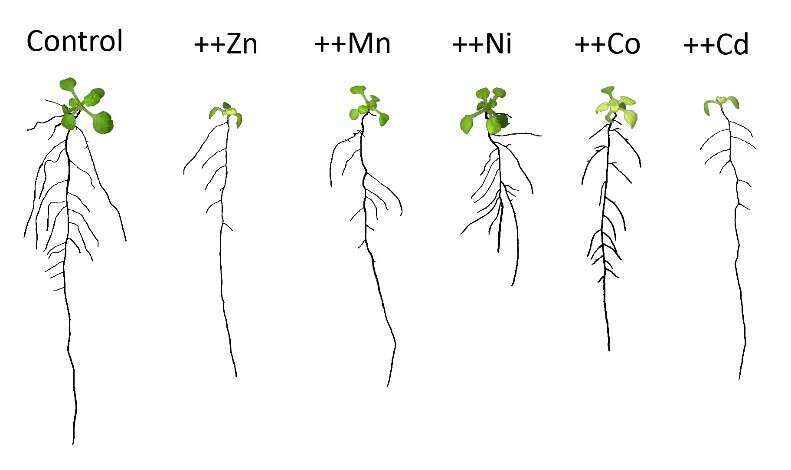
Unraveling the Mechanisms Underlying Heavy Metal-Induced Changes of Root System Architecture in Arabidopsis
2Department of Plant Physiology, Plant Science and Biodiversity Center of Slovak Academy of Sciences, Slovakia
Contamination of soils with heavy metals is a major environmental concern due to pollution originating from industrial activities, agriculture, inappropriate disposal of sewage sludge or fossil fuel combustion. Heavy metals can interfere directly or indirectly with plant development, the latter for example by inducing nutrient (e.g. Fe) deficiencies. Recently, we reported that heavy metals (Zn, Mn, Ni, Co and Cd) induce, to some extent, specific root architectural changes in Arabidopsis thaliana. For instance, high Zn and high Mn inhibited LR growth and development while almost not affecting primary root elongation, evoking a phenotype that in fact resembled Fe deficiency. These architectural changes could be largely reverted by supplying Fe to leaves of Zn-treated plants, indicating that Zn interferes negatively with systemic Fe signaling. Since inhibited root growth of Mn-treated plants could not be rescued with foliar Fe, it is likely that Mn itself can inhibit LR elongation. Among all tested heavy metals, high Ni caused the most distinctive architectural change by inducing gravitropic defects and by strongly inhibiting the elongation of the primary root while stimulating LR development. Our ongoing analyses also demonstrate that Ni has a local inhibitory effect on root elongation and can suppress cell elongation without disrupting the integrity of the stem cell niche. The analysis of auxin-responsive reporters revealed that excess Ni inhibits shootward auxin distribution, likely explaining the gravitropic phenotypes of Ni-treated plants. Furthermore, we found that PIN2 activity is very sensitive to Ni, as the presence of this heavy metal rapidly reduced PIN2 levels in roots. To investigate the negative effect of Ni during anisotropic cell expansion, we assessed cortical microtubule organization and dynamics with a molecular reporter. Our results demonstrate that Ni disrupts microtubule orientation and stability, suggesting that cell wall integrity/properties are altered by this heavy metal.

Powered by Eventact EMS